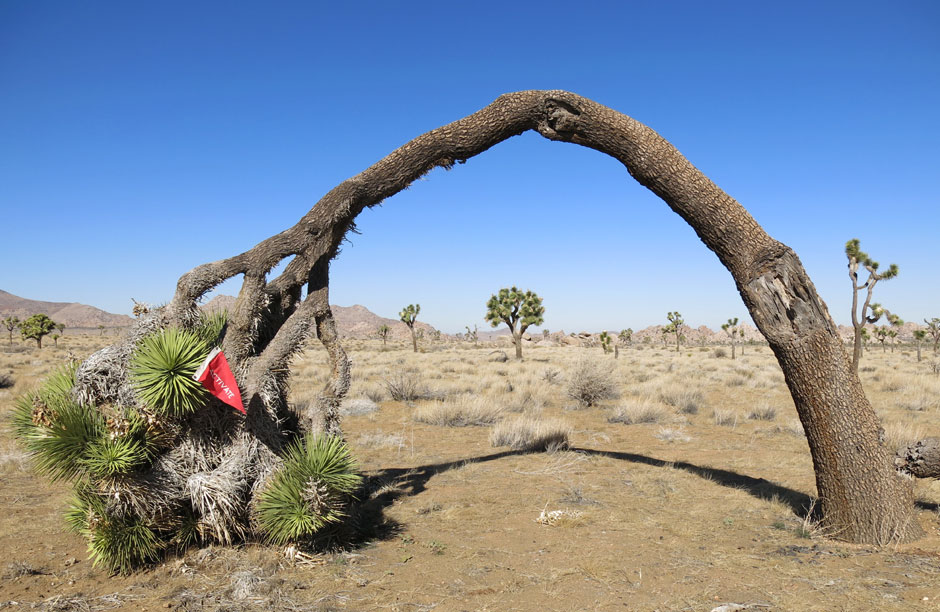PROJECT
Flag #2: Joshua Tree, California
Location: Joshua Tree National Park, California
The Joshua Tree is a high desert plant, that dates back over two million years ago. Mormons gave the Joshua Tree its name in the early 19th century – because it reminded them of the biblical prophet Joshua with his arms upraised in prayer. They saw this plant as a spiritual sign of welcome into the Promised Land and used it as a guide to find their way from California to Utah.
The tree is believed to be a relic of a time that was more moist, but today has adapted to the arid desert climate. As part of its adaptation the Joshua Tree has a special relationship with the night. The leaves actually remain dormant during the day, and save their respiration cycle for the night-time hours when the air is cooler, and moisture can be conserved. It is also at night when the Pronuba moth pollinates the flowers. A number of observers have noted that the Joshua Tree flowers, which never appear fully open, reveal themselves more to the night, as well as releasing their fragrance into the night air. Joshua Tree is in its full glory in a moonlit desert night, as its white flowers glow in the eerie luminescence of reflected light.
In recent years, with the onset of more frequent and longer lasting droughts the tree has almost halted it’s reproduction cycle. At a study site in Wickenberg, Arizona, there have been no new Joshua Trees in over 30 years. Yet, each year in the spring they still produce their fragrant blooms. This past spring the Joshua Tree flowering was considered by locals and park keepers at Joshua Tree National Park in Southern California to be the showiest in recent memory. Scientists hypothesize that the severe drought suffered by California and other states in the western United States triggered the trees to produce more flowers and in effect more seeds as a desperate attempt to survive as a species.
This is just one story of one unique species of life on earth trying to survive the changes happening on our planet, be it climate change, habitat loss, scarcity of vital resources or facing competition instead of cooperation between humans and their own kind.
